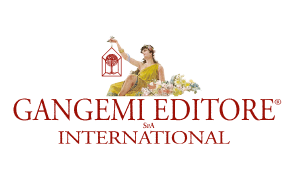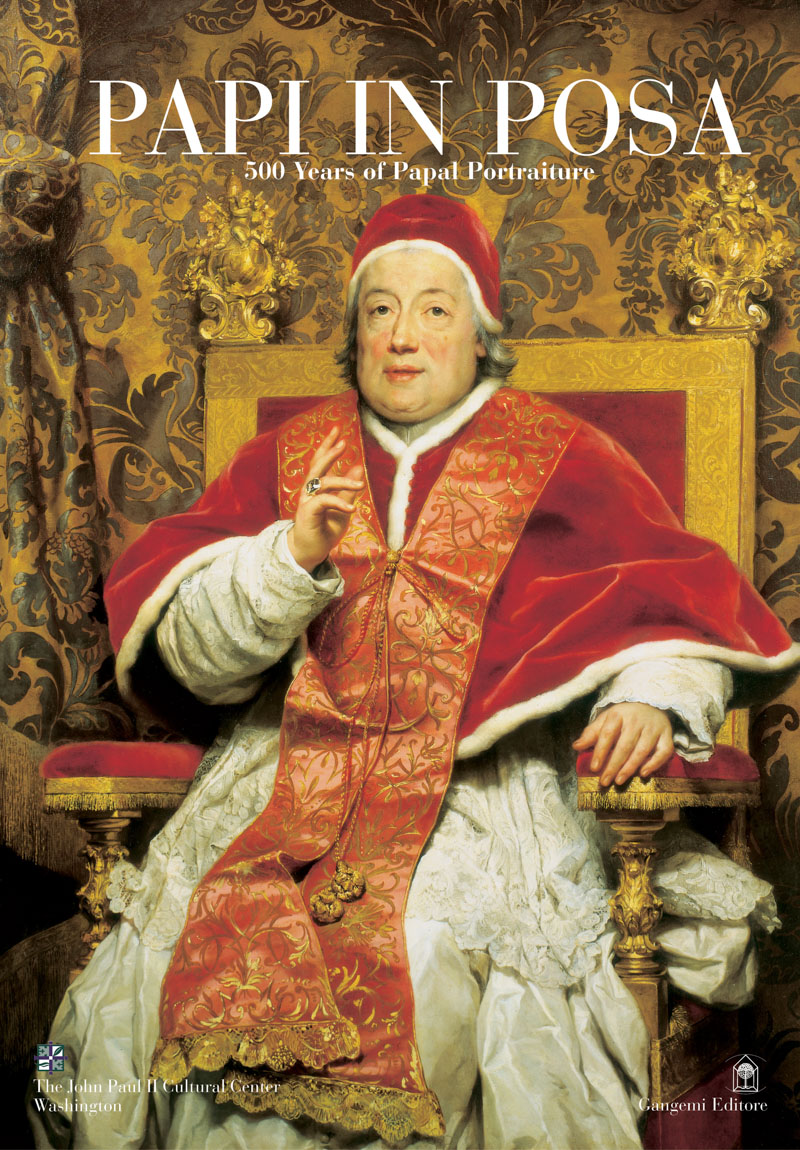Papi in Posa. 500 Years of Papal Portraiture
A cura di: Petrucci Francesco
Autori: Appignanesi Paolo, Buranelli Francesco, Cannata Pietro, Colucci Isabella, Leone Rossella, Lo Bianco Anna, Marra Susanna, Nocco Maria Antonia, Petrucci Daniele, Petrucci Francesco, Quieto Pier Paolo, Sansone Renata, Starnotti Simone, Tittoni Maria Elisa, Vannugli Antonio
Full English text
Formato: 21 x 29,7 cm
Legatura: Filorefe
Pagine: 224
Anno edizione: 2005
ISBN: 9788849208764
EAN: 8849208766
UB. INT. : T448F V15i V23e V27c V42e
Contenuto
The exhibition entitled “Papi in Posa,” i.e., “Papal Portraiture,” with the highly refined and historically significant Braschi Palace – home of the Museum of Rome – in 2004, and now in Washington, The John Paul II Center, is not offered only as an excellent exposition of masterpieces from major international museums – such as the Vatican Museums – and prestigious private collections, but stands out in particular because it is one of the most important expositions of portrait painting ever because of both the outstanding quality and the considerable number of paintings and sculptures offered – executed by Europe’s leading artists from the last five centuries – and the great spiritual and social significance of the personages portrayed: the greatest Pontiffs who from the 16th century to the present have sat in the Chair of Saint Peter.
It is suggestive to observe, as we scan the unique artistic itinerary offered by the curators of the exhibition, how through the succession of historical periods and particularly by virtue of the esthetic verve and inner sensitivity of the artists, the description of the human person was oriented, with extreme plastic ductility and acuity in their perception of their subjects’ physiognomy, to represent not only the body lines of the subject being depicted but, in particular, the most intimate traits of the heart, the lively mobility of their thought, the innermost lines of the subject’s character, in an intense dialogue of chiaroscuro observations from which the characterizing notes of complex personages are evinced – persons who appear completely clear and evident only to those who are capable of sublimating their outward appearance into an acute observation.
From this prestigious gallery of portraits it emerges unmistakably how the anthropocentric path of human thought has manifestly reverberated within the bounds of the figurative arts through a progressive contextualization, which sees the subject represented unbound through a metatemporal aura of rarefied abstraction and placed, naturalistically, in a precise and well defined spatiotemporal sphere. At the same time, we witness a gradual definition of the personage portrayed as the bearer of a clear personal connotation – the self and the identity, which seem to be invisible and thus impossible to represent – no longer, hortatively, as an idealized and metaphoric emblem of absolute values in deference to a markedly ethical and pedagogical conception.
The exhibited works, which rightfully range themselves among the most outstanding expressions of portraiture, reveal a deep spiritual harmony evocative of beauty and unleash a lively dialogue with the onlooker based on a real and inherent economy of the act of viewing, albeit freed from the exercise of a psychologism oriented toward uncontrollable wanderings.
The reception of the meaning of the formal systems – thoughtful poses and attitudes – involves, to be sure, the active presence of the spectator in a sort of visual dialogue with the portrait that is not considered exclusively as a fixed commemorative system but rather as an interactive structure.
In the perspective of the reception, the observer becomes a fundamental element for the construction of the meaning of the image that, from this very private perspective, undergoes obvious momentous transformations.
Observer and image thus become integral parts of a fascinating system of visual exchange not unlike the mechanisms of verbal dialogue: both members of the “pair” take on contemporaneously the dual role of subject/object, restructuring the complex relational web established in a rapport between an “I” and a “you.”
Beyond the temporal contingencies, each portrait is recounted and seduces us through the universal language of fame: this incarnates, deeply, the artist’s attempt to describe the personality of the subjects portrayed, consigning the multiform essence of their nature to one attitude or to a single expression by resorting to a refined psychological introspection in an attempt to render visually the subject’s inner world.
It is owing to the above considerations that, while I applaud the felicitous initiative of giving life to such a culturally transcendent exhibition, I would wish that all those who will have the pleasure of visiting it or at least of perusing the pages of this catalogue will be able to perceive the portraits of the individual popes not as so many freestanding elements, but rather as integrated parts of a related set of men who, albeit struggling with the many and varied anxieties of everyday life, endeavored to serve Christ among their brothers, each one with a clear perception of himself as servo servorum Dei – the servant of God’s servants!
Through looks, attitudes and symbols committed by the artist in a well-constructed iconographic code to the pictorial or sculptural page, the discerning observer cannot help but grasp a veiled spiritual harmony that reflects the profound mystery of faith and propagates an echo of the ineffable beauty of God, revealing how, through art, man – pulled between the eternal and the transient – strives to draw close to his Creator.
Francesco Cardinal Marchisano
Vicar General of the Pope for the State of Vatican City
Parole chiave
Condividi su













